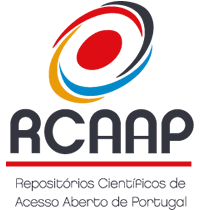Unfit for consumption: microbiological risks of natural water sources in rural areas
DOI:
https://doi.org/10.48797/sl.2025.383Keywords:
PosterAbstract
Background: Access to clean and safe water is vital for public health [1], especially in rural areas, where many households depend on untreated natural water sources [2]. Objective: This cross-sectional study combines an epidemiological survey with microbiological analysis to assess the risks of untreated water consumption and identify populations vulnerable to waterborne diseases. Methods: Drinking water samples were collected from 31 wells (on private properties) and 9 natural streams (fountains) across two parishes (Chaves municipality). Samples were analyzed according to Decreto-Lei 69/2023, following ISO standards for total heterotrophic microorganisms, total coliforms, Escherichia coli, Enterococcus spp., and Clostridium perfringens. A survey was conducted to understand water usage patterns and identify at-risk populations. Epidemiological data on age, water usage, preferences, and contamination sources were collected from 28 households (58 individuals). Results: Microbiological analysis showed that 93% (37 out of 40) of samples were unsafe for consumption. Well water was heavily contaminated, with coliform bacteria (90%), Escherichia coli (55%), Enterococcus spp. (55%), and Clostridium perfringens (52%). Only two well water samples and one natural stream sample were in conformity with the legislation. The majority of individuals involved in the study (61%) belonged to age groups at higher risk (<15 years – 2% and >65 years – 59%), therefore more susceptible to waterborne diseases. Among households, 93% used well water, primarily for irrigation (48%), hygiene (17%), cooking and laundry (15% each), and drinking (5%). Twenty-nine percent drank water from natural streams. When asked about drinking preferences, 32% favored bottled water, 22% chose mains water, 18% preferred stream water, and 7% well water. Regarding contamination sources, 86% of households had small horticultural operations, 64% kept farm animals, and although most households (89%) had public sanitation, 11% still relied on septic tanks. Conclusions: This study suggests that untreated water sources, such as wells and natural streams, may pose health risks in rural areas. Many households rely on these sources without full awareness of contamination risks, increasing their vulnerability to waterborne diseases. The study also has a citizen science component, as results will be shared with the local population to raise awareness and promote safe water usage practices.
References
1. WHO (2022). A field guide to improving small drinking-water supplies: water safety planning for rural communities. Copenhagen: WHO Regional Office for Europe Licence: CC BY-NC-SA 3.0 IGO.
2. Lee, D., & Murphy, H. M. (2020). Private Wells and Rural Health: Groundwater Contaminants of Emerging Concern. Curr Environ Health Rep 2020, 7, 129–139, doi: 10.1007/s40572-020-00267-4
Downloads
Published
How to Cite
Issue
Section
License
Copyright (c) 2025 Inês Rodrigues, Ofélia Godinho, Olga Lage, Sandra Quinteira

This work is licensed under a Creative Commons Attribution 4.0 International License.
In Scientific Letters, articles are published under a CC-BY license (Creative Commons Attribution 4.0 International License), the most open license available. The users can share (copy and redistribute the material in any medium or format) and adapt (remix, transform, and build upon the material for any purpose, even commercially), as long as they give appropriate credit, provide a link to the license, and indicate if changes were made (read the full text of the license terms and conditions of use).
The author is the owner of the copyright.









